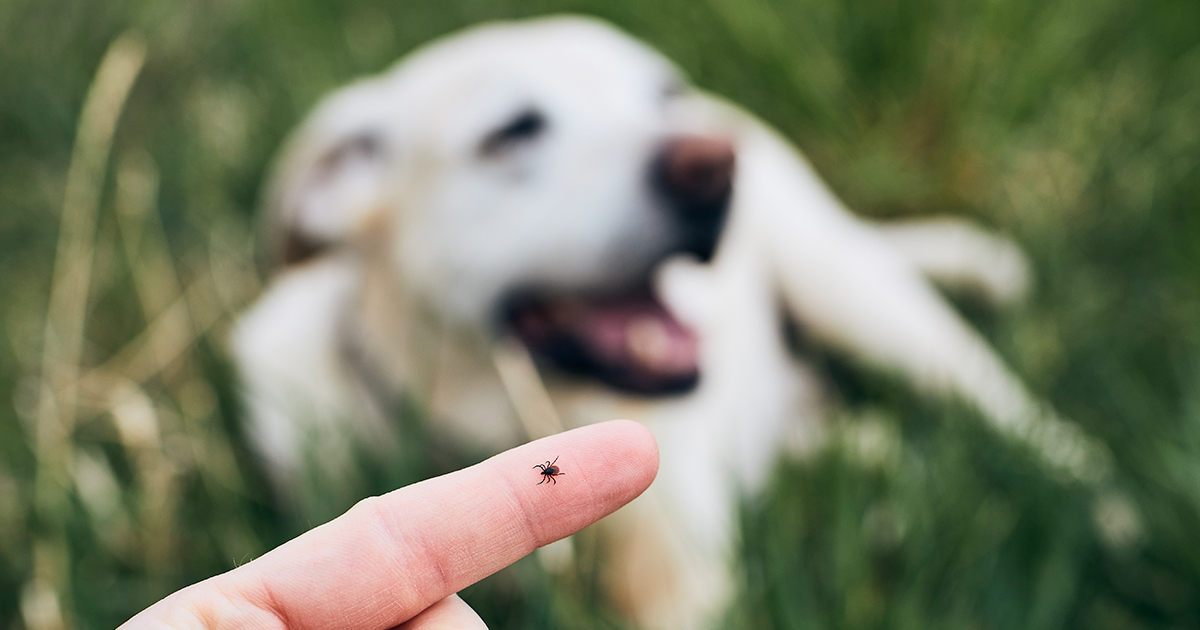
Warm weather traditionally signals the start of tick season in Pennsylvania and nationwide. However, researchers are finding that tick season is starting earlier than usual, making educating yourself about ticks and tick bites even more important.
It’s especially true in Pennsylvania, which has the highest rate of Lyme disease in the United States – and it’s been that way for 11 of the past 12 years, according to the Centers for Disease Control and Prevention (CDC).
Read on to learn about the most prevalent ticks in Pennsylvania, including where they live, when they’re most active, what their bites look like, and what diseases they can carry.
There are more than 900 species of ticks worldwide, and at least 25 of them are found in Pennsylvania. Here are four types of common ticks found in Pennsylvania:
Blacklegged ticks are found in wooded areas (including trees, shrubs, tall grass, and fallen leaves) and near rural or secluded homes and buildings. These ticks are present anytime that temperatures are above freezing. However, your greatest risk of being bitten is during the summer months when they are most active. Blacklegged ticks are capable of feeding on humans at any stage.
For such a small tick – typical sizes range from a poppy seed to the head of a pin – blacklegged ticks can do a lot of damage. Many people never see the tick or realize they were bitten until they begin having symptoms.
A blacklegged tick bite may appear pink or red on light skin or purple or brown on dark skin. If the tick is carrying Lyme disease, the bite area will likely develop a distinctive “bullseye” rash (a large dot in the center with rings around it). Other symptoms may include fever, headache, and fatigue.
Blacklegged ticks carry Lyme disease (the most common tick-borne illness), anaplasmosis, babesiosis, ehrlichiosis, deer tick virus, hard tick relapsing fever, and more.
American dog ticks are primarily found in tall grass, shrubs, yards, and wooded areas. They are much larger than blacklegged ticks – an engorged female American dog tick can be as large as a grape.
Younger American dog ticks are active from late winter to early spring. They typically target small mammals, such as mice or chipmunks. Adult American dog ticks are active through spring and summer and target larger mammals. Examples include dogs (hence the name), cats, raccoons, skunks, and humans.
After the bite, you will likely develop an itchy rash, which may or may not have the “bullseye” pattern. Other potential symptoms include fever, vomiting, and abdominal pain.
American dog ticks carry Rocky Mountain spotted fever (less common than Lyme disease but potentially more severe), tularemia, and more.
Younger lone star ticks are active from May to August, while adults are active from April to June. Lone star ticks feed on large mammals, including dogs, coyotes, horses, cattle, and humans. These fast-moving and aggressive biters are found in animal resting areas, tall grass, and wooded areas (where they often cling to a low-lying branch or twig).
People bitten by lone star ticks will occasionally develop a “bullseye” rash, even though these ticks do not carry Lyme disease. The rash usually appears within a week and then expands. The saliva from a lone star tick can also cause mild irritation on your skin. Other symptoms may include fever, headache, and fatigue.
Lone star ticks carry Rocky Mountain spotted fever, Southern tick-associated rash illness (STARI), Ehrlichia, tularemia, heartland virus, and more. (Fun fact: studies suggest that lone star tick bites may be responsible for the recent rise of meat allergies in adults.)
Groundhog ticks were once the most common tick species in Pennsylvania but have since declined, thanks to blacklegged ticks and American dog ticks. They mostly target groundhogs but are occasionally found on birds, small animals, or humans.
Groundhog ticks rarely bite humans. If you have any of the bite symptoms listed above, another type of tick is likely involved.
Groundhog ticks carry Powassan disease, which can infect your brain (encephalitis) or the membranes around your brain and spinal cord (meningitis).
All vybe urgent care centers can assist with tick removal, testing, and diagnosis after a tick bite. We can also provide you with a treatment plan for tick-borne illnesses and refer you to a specialist if needed.
It typically takes just 24-36 hours for an attached tick to infect you, so time is of the essence. Removing a tick quickly (and safely) can reduce your risk of contracting Lyme disease and other tick-borne illnesses. Doing so can also help prevent the long-term health complications.
Ticks may be tiny, but they can cause giant-sized health problems – and that’s where vybe comes in. Visit vybe urgent care for tick removal, evaluation of a tick bite or skin rash, testing and treatment for tick-borne illnesses, and more.
We’re open seven days a week with extended weekday evening hours. You can walk in or you can schedule an appointment at your convenience.
Find a vybe near you today!
FIND YOUR VYBE